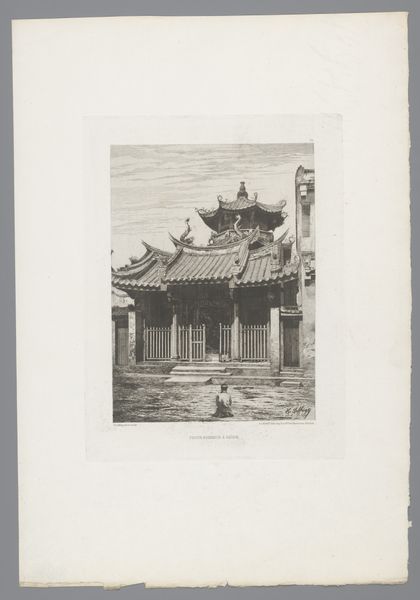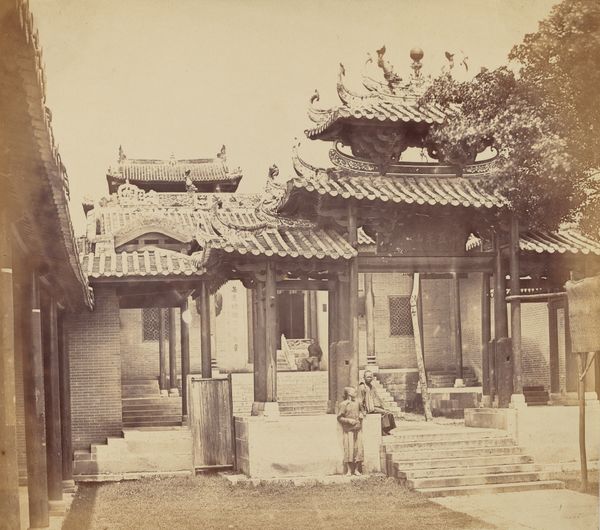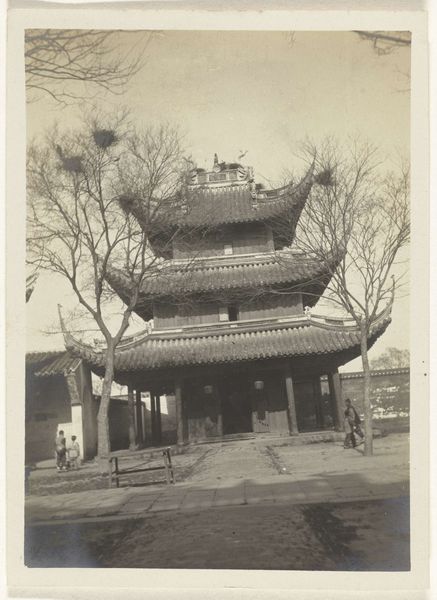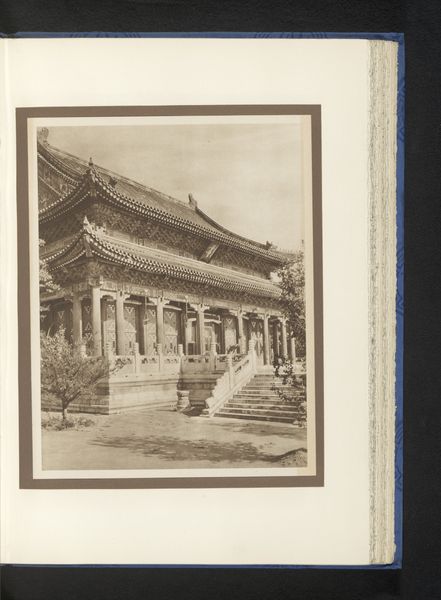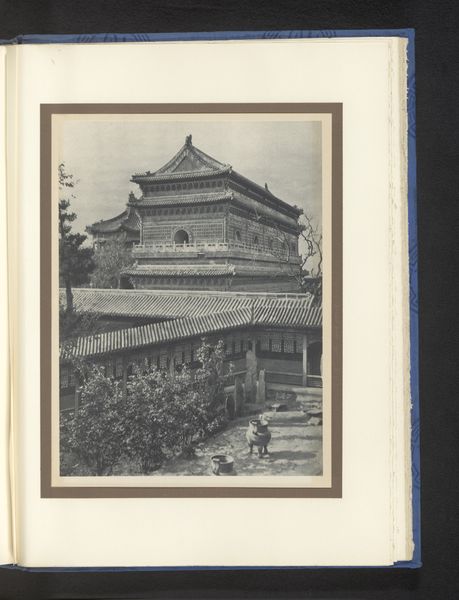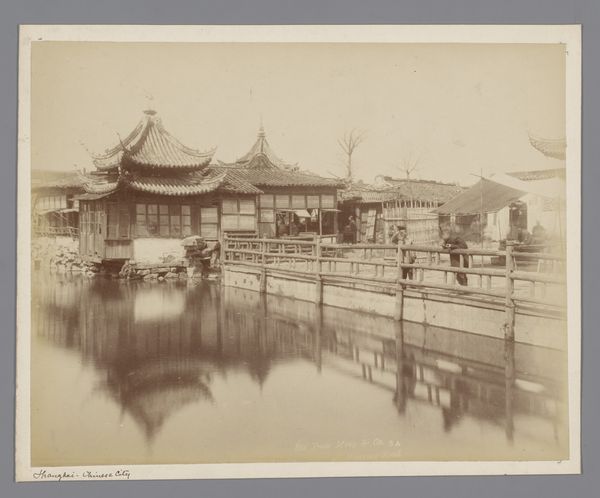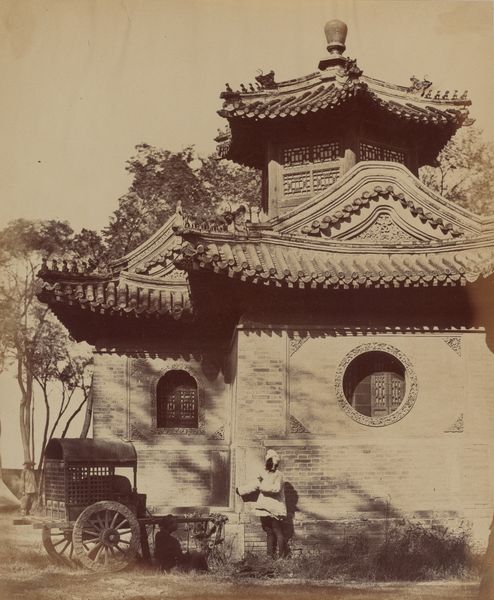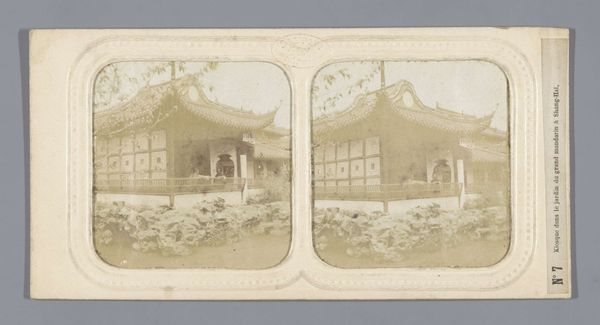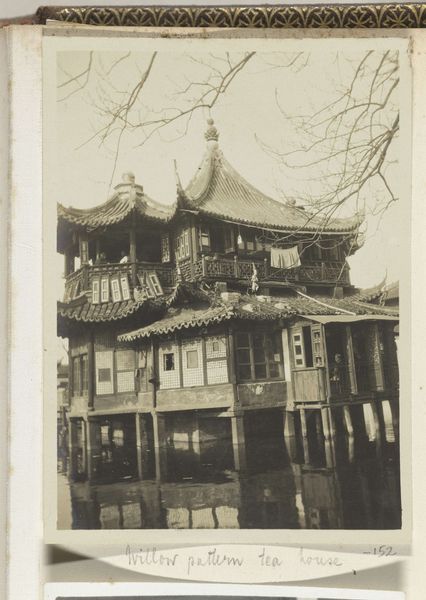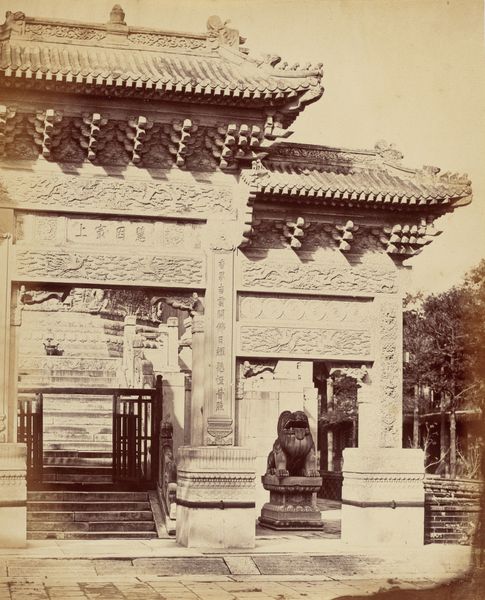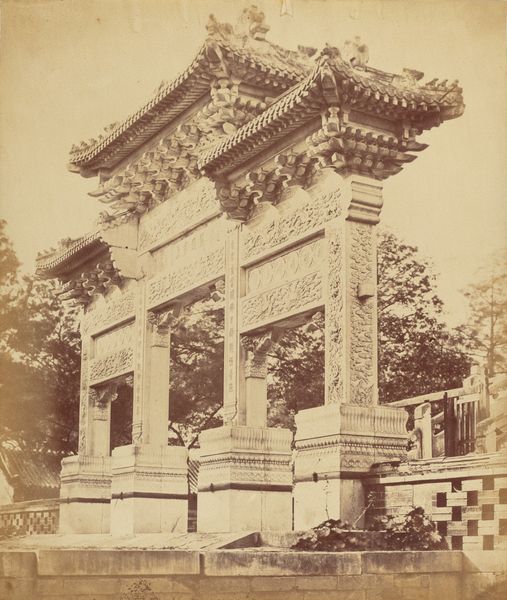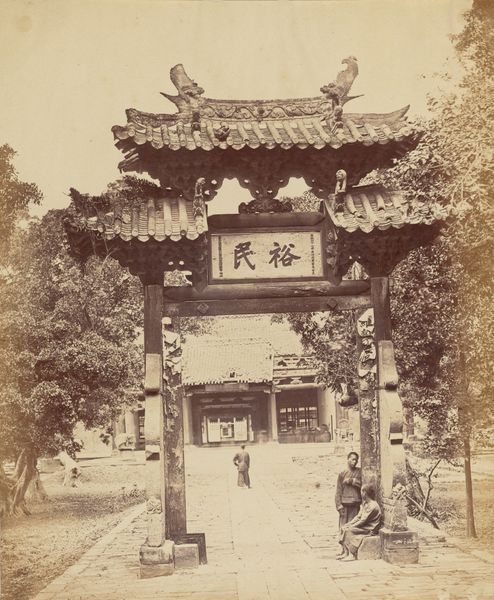
photography, albumen-print
#
asian-art
#
landscape
#
photography
#
orientalism
#
cityscape
#
albumen-print
#
building
Dimensions: height 164 mm, width 107 mm
Copyright: Rijks Museum: Open Domain
Editor: This is an albumen print by Adolphe Block, titled "Chinese paviljoen op de Wereldtentoonstelling te Parijs in 1878," so, the Chinese Pavilion at the Paris World Exposition of 1878. I’m immediately struck by the symmetry of the pavilion and its somewhat ethereal quality, maybe due to the photographic process of the time. How do you interpret this image, what stands out to you? Curator: The pavilion itself is a symbol, meticulously constructed to convey cultural and national identity at a time of intense global exchange. Think about what the world expositions represented—nations presenting carefully curated versions of themselves. The layered roofs, for instance, are not just architectural details but visual markers deeply rooted in Chinese architectural tradition, each tier a signifier of status and cosmology. How does the surrounding space affect your reading of the pavilion? Editor: Well, it seems rather enclosed, doesn’t it? Almost like a stage set, a presentation. Curator: Precisely! It's deliberately framed, presented. Consider the photographic medium itself. An albumen print like this wasn't just a record; it was a commodity, a way for people to possess an image of the exotic and unfamiliar. Notice too how "SECTION CHINOISE" is written in French on the lower border, almost as an assertive claim. The whole pavilion within this context embodies the complex dynamics of Orientalism, that desire to understand, but also to categorize. Editor: So, it's less about accurate representation and more about constructing a particular image? Curator: Indeed. And that construction, the deliberate staging, speaks volumes about the cultural encounter between East and West at that time. Editor: That's a great point. Now I understand that this photograph isn’t only a historical document, but it’s an artful expression, an artifact of cultural interpretation and exchange.
Comments
No comments
Be the first to comment and join the conversation on the ultimate creative platform.

